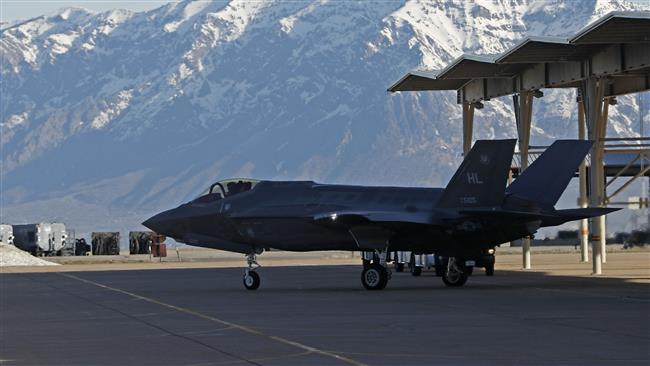F-35 on first operational deployment to Europe: Pentagon
The US Air Force is about to deploy its F-35 fighter jets to Europe on their first operational mission, where they would partake in joint exercises with NATO forces.
The Pentagon made the announcement on Friday, noting that a “small number” of F-35A stealth aircraft from an airbase in Utah would be sent to an undisclosed location in Europe.
After the drills, the fighter jets would stick around for a few more weeks in order to help deter what Washington and its allies refer to as “Russian aggression.”
The deployment was arranged during the administration of former US President Barack Obama.
According to the Pentagon, the deployment was aimed at facilitating the expensive warplane’s mass deployment in the upcoming years.
“This training deployment signifies an important milestone and natural progression of the F-35 program, allowing the Air Force to further demonstrate the operational capabilities of the fifth generation fighter aircraft,” a statement by the Pentagon read.
“It also assists in refining requirements for eventually basing the F-35A in Europe, which is scheduled to receive the aircraft in the early 2020s,” the statement added.

The F-35 has three variants: the A-model with conventional takeoff and landing which is the export version; the F-35B variant, which can handle short takeoffs and vertical landings for the Marine Corps and the British navy; and the F-35C, designed exclusively for the US Navy.
Although the US refuses to disclose the aircraft’s destination during their stay in Europe, it has been a well-known fact that the UK’s RAF Lakenheath airbase would house at least 54 F-35As. The timeline for the deployments remains unclear.
The announcement comes days after the Pentagon’s newly retired chief weapons tester described F-35 as “scarcely fit to fly.”
Read More:
Michael Gilmore, who was the Director of Test and Evaluation for the US military until recently, laid out in his parting report a long list of problems plaguing the $400 billion program in all departments from combat-readiness to the wing design.
According to Gilmore, the aircraft’s stealthiness is undermined by a poorly designed Electro-Optical Targeting System. The system’s low resolution and range forces the pilot to blow his cover by making a close overflight before returning to the safety zone, where they can launch their attack.
'Iranian embassy in Damascus will soon resume its activities'
Israel kills 20 Gazans, including children, in strike on school
EU says will lift sanctions on Syria when minorities are protected
Israel to deploy automatic weapons in occupied West Bank to protect settlements
Israel approves plan to expand settlements in occupied Golan
Iran: ‘Not impossible’ to issue death sentence for Israel’s Netanyahu
Iran declares holidays to curb energy demand
VIDEO | Thousands rally in Sydney, demand action against Israel’s regional aggression










 This makes it easy to access the Press TV website
This makes it easy to access the Press TV website